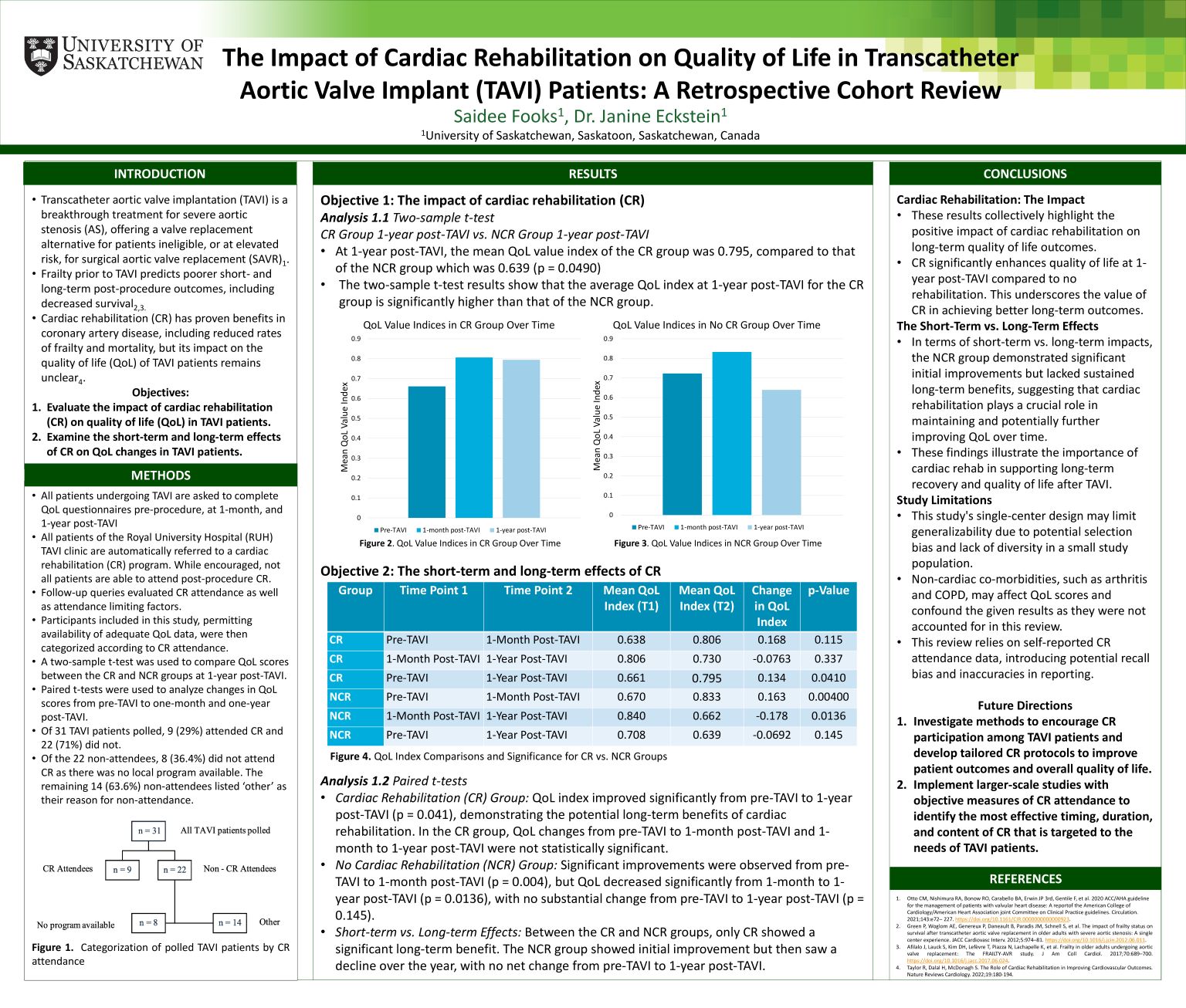
The Impact of Cardiac Rehabilitation on Quality of Life in Transcatheter Aortic Valve Implant (TAVI) Patients
Saidee Fooks
Background: Transcatheter aortic valve implantation (TAVI) offers a valve replacement option for patients ineligible, or at elevated risk, for surgical aortic valve replacement (SAVR)1. Cardiac rehabilitation (CR) has proven benefits in coronary artery disease, but its’ impact on quality of life (QoL) in TAVI patients is not well-studied2,3,4. This review aims to evaluate how CR affects QoL outcomes in TAVI patients.
Methods: Participants included in this study, permitting availability of adequate QoL data, were categorized according to CR attendance. A two-sample t-test was used to compare QoL scores between the CR and no CR (NCR) groups at 1-year post-TAVI. Paired t-tests were then used to analyze changes in QoL scores from pre-TAVI to one-month and one-year post-TAVI.
Results: Of 31 TAVI patients, 9 attended CR. At 1-year post-TAVI, these CR participants exhibited a significantly higher average QoL value index when compared to their NCR counterparts (p = 0.0490). While both groups experienced short-term improvements, only CR participants maintained improved QoL scores, as NCR participants experienced a significant decline over one year (p = 0.0136).
